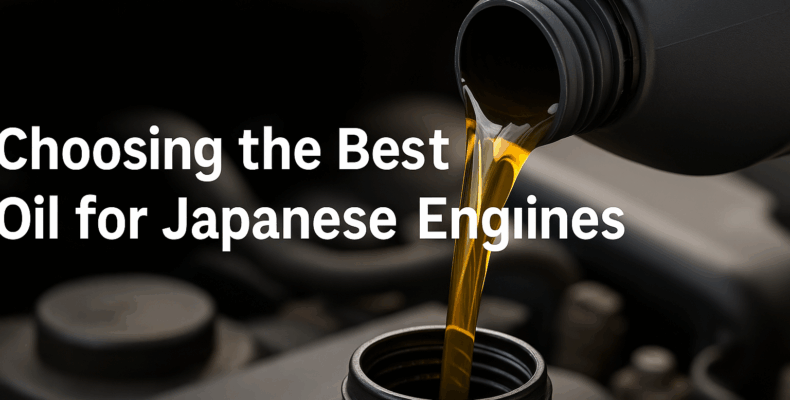How to Select the Right Engine Oil for Optimal Performance and Longevity
Whether you’re driving a Toyota, Honda, Nissan, Mazda, or Subaru, one of the most important factors in maintaining your vehicle’s health is using the right engine oil. Japanese engines are known for their efficiency, precision engineering, and long lifespan — but they perform best when properly lubricated with high-quality, appropriate oil.
In this article, we’ll help you understand how to choose the best oil for your Japanese car and why it matters — especially for those buying or maintaining used Japanese vehicles.
1. Why the Right Engine Oil Matters
Engine oil plays a vital role in:
-
Reducing friction between moving parts
-
Controlling engine temperature
-
Preventing sludge buildup
-
Protecting against corrosion
-
Ensuring smoother, more efficient performance
Using the wrong oil can lead to increased engine wear, poor fuel economy, and even long-term damage.
2. Understand Oil Grades (Viscosity)
Japanese cars typically require oil with a viscosity suited to the engine’s design and local climate. Common oil grades include:
-
0W-20: Excellent for fuel efficiency and cold starts (common in modern Toyotas and Hondas)
-
5W-30: Good all-rounder for older Japanese engines
-
10W-30 or 10W-40: Better suited for warmer climates or high-mileage engines
Always consult your vehicle’s owner’s manual for the recommended viscosity.
3. Synthetic vs. Conventional Oil
-
Synthetic Oil: Offers better performance, higher temperature resistance, and longer life. Ideal for newer Japanese engines and hybrids.
-
Conventional Oil: More affordable and suitable for older engines that don’t require high-tech lubrication.
Blended oils (semi-synthetics) are also available and can offer a good balance of cost and performance.
4. API and ILSAC Certifications
Look for oils that meet international standards:
-
API SN, SP, or newer for gasoline engines
-
ILSAC GF-6 for improved efficiency and emissions
-
JASO-MA (for motorcycles, if applicable)
These certifications ensure compatibility with Japanese engine technologies.
5. Change Intervals for Japanese Cars
Most modern Japanese vehicles can go 7,000 to 10,000 km between oil changes when using synthetic oil. Older models may require more frequent changes (every 5,000 km) with conventional oil.
Signs it’s time to change your oil:
-
Dark or dirty oil on the dipstick
-
Decreased fuel efficiency
-
Engine noise or rough idling
-
Warning lights on the dashboard
6. Oil Considerations for Hybrids and Turbocharged Engines
-
Hybrids (e.g., Prius, Insight): Require low-viscosity oil (0W-20 or 0W-16) for efficiency and smooth startups.
-
Turbocharged engines (e.g., some Mazda or Subaru models): Need synthetic oils with excellent heat resistance and detergents to prevent carbon buildup.
7. Tips for DIY Oil Maintenance
-
Warm the engine before draining old oil
-
Always replace the oil filter when changing the oil
-
Use a torque wrench to avoid over-tightening the drain plug
-
Safely dispose of used oil at authorized recycling centers
Regular oil changes are one of the most cost-effective ways to ensure engine longevity.
Trusted Exporters of Japanese Used Cars
Whether you’re maintaining a recently purchased Japanese vehicle or looking to import one, start with a reliable exporter that values vehicle condition and maintenance.
Here are some of the most respected Japanese used car exporters:
-
EVERY Co., Ltd. – Focused on quality Japanese exports
-
SBT Co. Ltd.
-
Be Forward
-
Qualitex Trading
-
Autorec Enterprise Ltd.
Learn more:
Top Recommended Japanese Used Car Export Companies for International Customers
Final Thoughts: The Right Oil Makes All the Difference
Choosing the right oil for your Japanese engine isn’t complicated — but it is essential. By following your manufacturer’s guidelines and using certified, high-quality oil, you can enjoy better performance, fewer repairs, and a longer-lasting vehicle.
Whether you drive a city car or a high-mileage family sedan, great maintenance begins with great oil.
